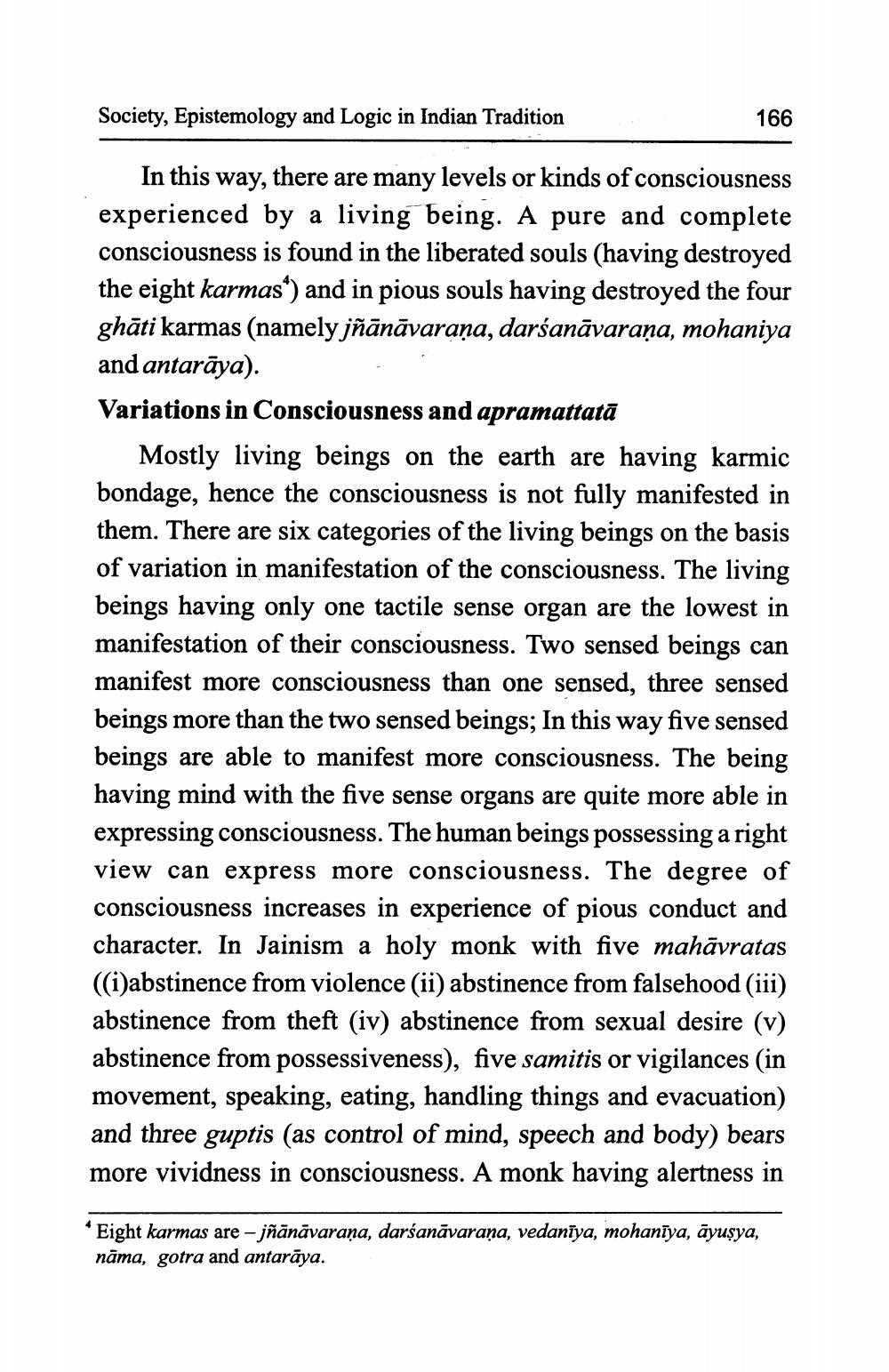________________
Society, Epistemology and Logic in Indian Tradition
166
In this way, there are many levels or kinds of consciousness experienced by a living being. A pure and complete consciousness is found in the liberated souls (having destroyed the eight karmas“) and in pious souls having destroyed the four ghāti karmas (namely jñānāvaraṇa, darśanāvaraņa, mohaniya and antarāya). Variations in Consciousness and apramattatā
Mostly living beings on the earth are having karmic bondage, hence the consciousness is not fully manifested in them. There are six categories of the living beings on the basis of variation in manifestation of the consciousness. The living beings having only one tactile sense organ are the lowest in manifestation of their consciousness. Two sensed beings can manifest more consciousness than one sensed, three sensed beings more than the two sensed beings; In this way five sensed beings are able to manifest more consciousness. The being having mind with the five sense organs are quite more able in expressing consciousness. The human beings possessing a right view can express more consciousness. The degree of consciousness increases in experience of pious conduct and character. In Jainism a holy monk with five mahāvratas ((i)abstinence from violence (ii) abstinence from falsehood (iii) abstinence from theft (iv) abstinence from sexual desire (v) abstinence from possessiveness), five samitis or vigilances (in movement, speaking, eating, handling things and evacuation) and three guptis (as control of mind, speech and body) bears more vividness in consciousness. A monk having alertness in
Eight karmas are - jñānāvarana, darśanāvarana, vedanīya, mohanīya, āyusya, nāma, gotra and antarāya.




